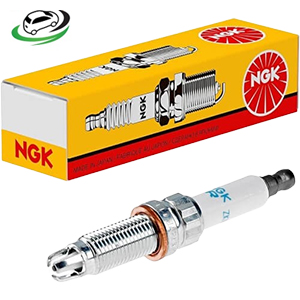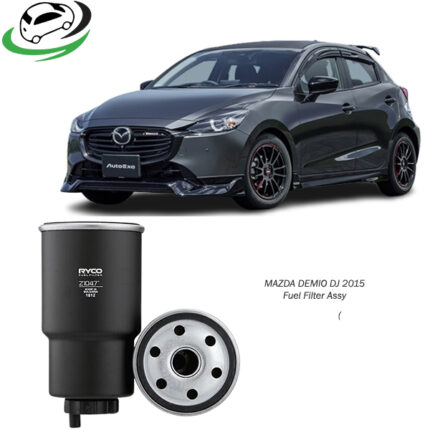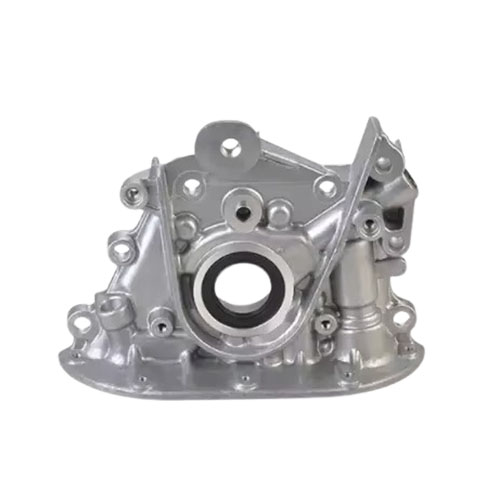-13%
Get Oil Pump Assy For Toyota 4AFE / 5AFE Engines 15100-15060 in Kenya
The oil pump assembly is a vital component in any engine, ensuring a steady flow of oil to lubricate and cool the moving parts. In Toyota’s 4AFE and 5AFE engines, the oil pump plays a crucial role in maintaining engine longevity and efficiency.
Without a properly functioning oil pump, the engine can suffer from poor lubrication, overheating, excessive wear, and eventual failure. This guide will cover everything you need to know about the oil pump assembly for Toyota 4AFE and 5AFE engines, including its function, components, working mechanism, maintenance, and benefits.
1️⃣ Understanding the Toyota 4AFE & 5AFE Engines
Before diving into the oil pump assembly, let’s briefly understand the Toyota 4AFE and 5AFE engines.
✔️ 4AFE Engine – A 1.6L inline-4 DOHC engine, widely used in Toyota models like Corolla, Carina, and Celica.
✔️ 5AFE Engine – A 1.5L variant of the 4AFE, offering better fuel efficiency while maintaining similar reliability.
Both engines share similar designs, including their lubrication systems, which rely on a gear-driven oil pump assembly to ensure smooth operation.
2️⃣ Function of the Oil Pump Assembly
The oil pump assembly in the 4AFE and 5AFE engines performs several essential functions:
✔️ Supplies Lubrication 🛢️ – Ensures all engine components receive oil to reduce friction and wear.
✔️ Maintains Oil Pressure 📈 – Keeps consistent oil pressure, preventing dry starts and excessive heat buildup.
✔️ Prevents Overheating 🌡️ – Helps dissipate heat by circulating cooling oil around engine components.
✔️ Removes Contaminants 🦠 – Assists in carrying dirt and debris to the oil filter, keeping the engine clean.
✔️ Ensures Smooth Performance 🚗💨 – A well-lubricated engine runs more efficiently and lasts longer.
Without a working oil pump, oil circulation would stop, causing serious engine damage within minutes.
3️⃣ Types of Oil Pumps in 4AFE / 5AFE Engines
Toyota 4AFE and 5AFE engines use gear-driven oil pumps, specifically:
🟡 Internal Gear Pump (Trochoidal Pump) – This is the most common type used in Toyota engines. It consists of:
- Inner rotor (driven by the crankshaft)
- Outer rotor (driven by oil pressure changes)
- Creates suction to pull in oil and pressurize it before sending it to the engine
🟠 External Gear Pump – Less common but works similarly by using two interlocking gears to move and pressurize oil.
The trochoidal pump design is preferred because of its efficiency, durability, and ability to maintain stable oil pressure.
4️⃣ Components of the Oil Pump Assembly
The oil pump assembly consists of several important parts that work together to ensure proper lubrication.
🟢 Pump Housing – The outer casing that holds all internal components and maintains oil flow integrity.
🔵 Inner & Outer Rotors – The rotating gears responsible for drawing in oil and creating pressure.
🟠 Oil Pickup Tube & Strainer – A metal tube with a mesh filter that pulls oil from the sump and prevents debris from entering the pump.
⚫ Pressure Relief Valve – Regulates oil pressure by allowing excess oil to bypass back to the sump.
🟣 Gaskets & Seals – Prevent oil leaks and maintain a proper seal between components.
Each of these components must be in perfect condition to ensure the oil pump functions efficiently.
5️⃣ How the Oil Pump Assembly Works
The oil pump works using a simple but effective mechanism:
1️⃣ The engine starts, and the crankshaft begins rotating.
2️⃣ The inner rotor (driven by the crankshaft) rotates, pulling oil from the oil pan through the pickup tube.
3️⃣ The oil is compressed between the inner and outer rotors, increasing its pressure.
4️⃣ The pressurized oil is sent through the oil filter, removing dirt and debris.
5️⃣ The clean, pressurized oil is then distributed to the engine’s bearings, pistons, camshafts, and other moving parts.
6️⃣ The pressure relief valve opens if oil pressure becomes too high, preventing damage.
This cycle repeats continuously, ensuring the engine stays lubricated and runs smoothly.
6️⃣ Common Signs of a Failing Oil Pump 🚨
A failing oil pump can lead to serious engine damage. Look out for these warning signs:
❌ Low Oil Pressure Warning Light – Indicates reduced oil flow and possible pump failure.
❌ Engine Overheating 🌡️ – Poor lubrication causes excess friction and heat buildup.
❌ Noisy Valve Train or Timing Chain 🔊 – Insufficient lubrication causes rattling or ticking noises.
❌ Oil Starvation & Increased Wear 🔧 – Lack of oil leads to premature engine wear and possible seizure.
❌ Dark or Contaminated Oil 🛢️ – If oil isn’t circulating properly, sludge builds up.
Ignoring these signs can result in complete engine failure, requiring costly repairs.
7️⃣ Maintenance & Replacement of the Oil Pump 🛠️
Proper maintenance ensures the oil pump remains in good working condition.
🔹 Regular Oil Changes 🛢️ – Change oil and filter every 5,000 – 7,500 miles to prevent sludge buildup.
🔹 Use High-Quality Oil 🌟 – Use the recommended SAE 5W-30 or 10W-30 oil for Toyota 4AFE / 5AFE engines.
🔹 Check for Oil Leaks 🚗 – Inspect gaskets and seals for leaks that could affect oil pressure.
🔹 Monitor Oil Pressure 📊 – Keep an eye on the oil pressure gauge for any fluctuations.
🔹 Replace Worn Components 🔧 – If the pump shows signs of wear, replace it to avoid engine damage.
Toyota recommends replacing the oil pump every 100,000 to 150,000 miles, depending on driving conditions.
8️⃣ Benefits of a High-Quality Oil Pump Assembly 🌟
A premium oil pump provides multiple advantages:
✅ Ensures Proper Lubrication 🛢️ – Keeps all engine parts moving smoothly.
✅ Improves Engine Longevity 🔧 – Reduces wear and extends the engine’s lifespan.
✅ Prevents Overheating 🌡️ – Keeps the engine temperature under control.
✅ Enhances Performance 🚗💨 – Smooth lubrication leads to better acceleration and fuel efficiency.
✅ Reduces Repair Costs 💰 – Prevents major engine damage due to oil starvation.
Investing in a high-quality oil pump assembly ensures reliable engine performance and fewer costly repairs.
Conclusion 🎯
The oil pump assembly in Toyota’s 4AFE and 5AFE engines plays a critical role in ensuring smooth, efficient engine operation. Without it, the engine would quickly overheat, suffer damage, or fail completely.
📌 Key Takeaways:
✔️ Choose the right oil pump type (trochoidal) for your engine.
✔️ Replace the oil pump when you notice signs of wear or failure.
✔️ Regular maintenance (oil changes, pressure checks) is essential.
✔️ A high-quality oil pump extends engine life and improves performance.
Follow us on Facebook for more parts.



